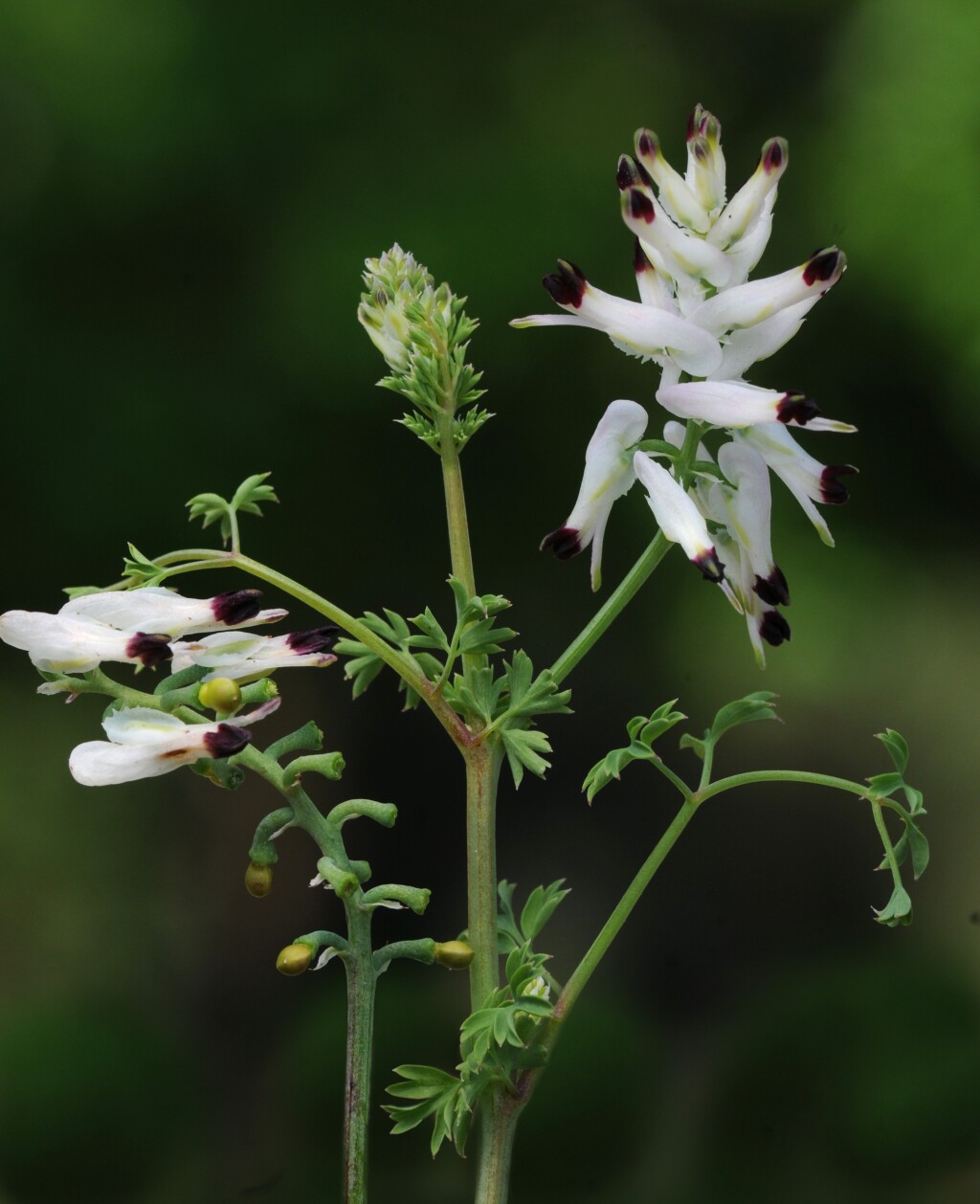Fumaria
Glabrous, herbaceous annuals with erect, semi-erect or weakly climbing stems. Mature leaves 2–4-pinnatisect, immature leaves simple to ternate. Inflorescence a leaf-opposed or terminal raceme. Pedicels short, subtended by bracts. Flowers zygomorphic; sepals lateral, often peltately attached, soon deciduous; petals 4, the dorsal one produced into a rounded spur, the inner pair joined at the apex; stamens 6; stigma usually 2-lobed. Fruit indehiscent, 1-seeded, approximately spherical, with 2 apical pits.
Approximately 50 species, mostly European with a few species extending into southern Asia and eastern Africa; 7 species naturalised in Australia.
Plants grown in shaded sites or 'out of season' frequently produce small, cleistogamous flowers. The key should permit identification of both normal and cleistogamous-flowered specimens.
Corolla lengths include the posterior spur when present.
Walsh, N.G. (1996). Fumariaceae. In: Walsh, N.G.; Entwisle, T.J., Flora of Victoria Vol. 3, Dicotyledons Winteraceae to Myrtaceae, pp. 73–78. Inkata Press, Melbourne.
 Spinning
Spinning



